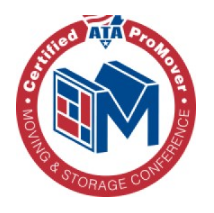Moving House Timeline: How Long Does It Really Take?

Moving to a new home is an exciting adventure, but it’s natural to wonder how long the process will take. The answer depends on various factors, such as the size of your home, the distance you’re moving, and whether you’re doing it yourself or hiring professionals.
A small local move might only take a few hours, while a large cross-country relocation could span several weeks. Understanding the elements that influence your moving timeline can help you plan more effectively and minimize stress.
We’ll explore the key factors that impact how long it takes to move, provide estimated timelines for different scenarios, and offer practical tips to streamline your experience. By the end, you’ll have a clearer picture of what to expect and how to create a personalized moving plan that works for you.

Factors Affecting Moving Time
Several key factors can significantly impact the time it takes to complete a move. These include the size of your home, the distance between locations, your chosen moving method, accessibility and logistics, and even the time of year and weather conditions.
Size Of Your Home
Number Of Rooms And Square Footage
The number of rooms and total square footage of your home play a crucial role in determining the duration of your move. A larger home with more rooms will naturally require more time to pack, load, transport, and unload compared to a smaller residence.
For example, a studio apartment can often be moved in a matter of hours, while a four-bedroom house may take a full day or more. It’s essential to consider the size of your living space when estimating your moving timeline.
Amount Of Belongings To Pack And Transport
In addition to the physical size of your home, the amount of belongings you need to pack and transport will also affect your moving time. If you have a large number of possessions, including furniture, appliances, and personal items, it will take longer to properly pack and load them onto the moving truck.
On the other hand, if you have fewer belongings or have done some decluttering before the move, the process will be more streamlined. Some moving services will pack unboxed things, which can save you time during the packing stage.
Distance Between Locations
Local Moves Vs. Long-Distance Moves
The distance between your current home and your new residence is another significant factor in determining the length of your move. Local moves, typically within the same city or metropolitan area, will generally take less time than long-distance or interstate moves.
For local moves, the travel time between locations is minimal, allowing for more time to be spent on packing, loading, and unloading. Long-distance moves, on the other hand, require more time for transportation, which can add days or even weeks to your overall moving timeline.
Travel Time And Potential Delays
When planning a long-distance move, it’s crucial to factor in the travel time between your current and new homes. This includes not only the time spent driving but also any potential delays due to traffic, road construction, or unforeseen circumstances.
If you’re moving across state lines, you may need to consider time spent on rest stops, overnight stays, and finding your way through unfamiliar routes. Planning for these potential delays can help you create a more accurate moving timeline.
Moving Method
DIY Moving Vs. Hiring Professional Movers
Your choice of moving method can greatly impact the time it takes to complete your move. If you opt for a DIY approach, you’ll be responsible for packing, loading, transporting, and unloading your belongings yourself.
This can be a more time-consuming process, especially if you have a larger home or limited assistance from friends and family. When considering a DIY move, it’s important to choose the right moving truck size options to accommodate your belongings and minimize the number of trips needed. On the other hand, hiring reliable home movers can significantly reduce the time and effort required on your part. Professional movers have the experience, equipment, and manpower to efficiently pack, load, and transport your belongings, often completing the process in a fraction of the time it would take to do it yourself. Comparing self-service and full-service movers can help you determine which option best fits your needs and timeline.
Packing And Unpacking Time
Regardless of whether you choose to move yourself or hire professionals, packing and unpacking your belongings will take up a significant portion of your moving timeline. The time required for this process will depend on the volume of your possessions, your organization skills, and the number of people assisting you.
To minimize packing time, consider decluttering before the move, using quality packing materials, and labeling boxes clearly. If you hire professional movers, inquire about their packing services, as this can save you considerable time and effort.
Accessibility And Logistics
Stairs, Elevators, And Narrow Doorways
The accessibility of your current and new homes can impact the time it takes to move your belongings. If you live in a multi-story home or an apartment building without an elevator, movers will need to navigate stairs, which can slow down the loading and unloading process.
Similarly, narrow doorways or hallways can make it more challenging to maneuver large furniture pieces, adding time to the overall move.
Parking And Loading Areas
The availability and proximity of parking and loading areas at both your current and new residences can also affect your moving timeline. If movers have to park far from the entrance or navigate multiple flights of stairs, it will take longer to load and unload the moving truck.
When planning your move, it’s essential to consider these logistical factors and communicate any potential challenges to your moving company in advance. This will allow them to plan accordingly and provide a more accurate estimate of the time required for your move.
Time Of Year And Weather Conditions
Peak Moving Season Vs. Off-Season
The time of year you choose to move can also impact your moving timeline. The peak moving season typically runs from May through September, with many people preferring to move during the summer months when children are out of school and weather conditions are generally more favorable.
However, moving during the peak season can also mean longer wait times for moving services, potential delays due to increased traffic, and higher costs. If your schedule allows, consider moving during the off-season (October through April) to potentially save time and money.
Impact Of Extreme Weather On Moving Time
Extreme weather conditions can also affect your moving timeline, regardless of the time of year. Heavy rain, snow, or extreme heat can make the moving process more challenging and time-consuming.
For example, movers may need to take extra precautions to protect your belongings from water damage during a rainstorm, or they may need to take more frequent breaks during extreme heat to avoid exhaustion. When planning your move, it’s essential to keep an eye on the weather forecast and have contingency plans in place for any potential weather-related delays.
By understanding these key factors and how they can impact your moving timeline, you’ll be better prepared to plan and execute a successful move. Whether you’re moving locally or long-distance, taking the time to consider the size of your home, the distance between locations, your moving method, accessibility and logistics, and the time of year and weather conditions can help you create a realistic moving timeline and minimize stress throughout the process.
If you’re planning an interstate move, consider reaching out to an experienced interstate moving service to help you with the details of a long-distance relocation.
Estimated Moving Timelines
Various factors can impact your moving timeline. The following estimates can help you plan your move more effectively and set realistic expectations for the duration of the process.
Small Local Moves (Studio To 2-Bedroom)
Professional Movers: 2-5 Hours
Hiring professional movers for a small local move (studio, one-bedroom, or two-bedroom apartment) can significantly reduce the time required. A team of two to three movers can typically complete the loading, transportation, and unloading process in just 2-5 hours.
However, this estimate does not include the time needed for packing and unpacking, which can add several hours or even days to your overall moving timeline.
DIY Moving: 1-2 Days
If you choose to handle a small local move yourself, expect the process to take 1-2 days, depending on the amount of help you have and your level of organization. This estimated timeline includes packing, loading, transporting, and unloading your belongings.
While a DIY move may save you money on professional moving services, it can be more physically demanding and time-consuming than hiring movers.
Medium Local Moves (3-4 Bedrooms)
Professional Movers: 4-7 Hours
For medium-sized local moves (three-bedroom or four-bedroom homes), hiring professional movers can help you complete the process in 4-7 hours. This estimate assumes a team of three to four movers and includes loading, transporting, and unloading your belongings.
Packing and unpacking services, offered by many professional moving companies for an additional fee, are not included in this estimate but can help streamline the process and reduce the overall time required for your move.
DIY Moving: 2-3 Days
A DIY approach to a medium-sized local move typically takes 2-3 days, depending on the amount of help you have and your level of organization. This timeline includes packing, loading, transporting, and unloading your belongings.
A DIY move for a larger home can be more physically demanding and time-consuming than a small local move, so enlist the help of friends, family, or hired labor to ensure a smooth and efficient process.
Large Local Moves (5+ Bedrooms)
Professional Movers: 7-9 Hours
For large local moves (homes with five or more bedrooms), hiring professional movers is often the most efficient option. A team of four to five movers can typically complete the loading, transportation, and unloading process in 7-9 hours.
This estimate does not include packing and unpacking, which can add several days or even weeks to your overall moving timeline.
DIY Moving: 3-5 Days
If you choose to handle a large local move yourself, expect the process to take 3-5 days, depending on the amount of help you have and your level of organization. This timeline includes packing, loading, transporting, and unloading your belongings.
A DIY move for a large home can be a significant undertaking, so having a well-organized plan and plenty of help is crucial to ensure a smooth and efficient process.
Long-Distance Moves
Expedited Moves: A Few Days
Some moving companies offer expedited moving services for long-distance moves that prioritize your move and ensure your belongings are delivered within a few days, depending on the distance. These services are generally more expensive than standard long-distance moves but can be a good option if you need to minimize downtime or have a tight moving timeline.
When considering an expedited move, discuss the specific timeline and any additional fees with your chosen moving company.
Standard Moves: 1-2 Weeks
For standard long-distance moves, expect your belongings to arrive at your new home within 1-2 weeks, depending on the distance. This timeline includes loading, transporting, unloading, and any additional time required for logistics and coordination.
Long-distance moves frequently entail more intricate logistics compared to local moves, including coordinating with various moving teams, adhering to interstate guidelines, and potentially addressing unexpected delays. When planning a long-distance move, work with an experienced and reputable cross state moving services provider to ensure a smooth and efficient process.
Understanding these estimated moving timelines can help you better plan your move and set realistic expectations for the duration of the process. Consider the size of your home, your chosen moving method, and any additional factors that may impact your timeline.
Pre-Move Planning And Preparation
The weeks and months leading up to your move are crucial for ensuring a smooth and efficient experience. By taking the time to plan and prepare, you can minimize stress, reduce the risk of delays or mishaps, and make the entire process more manageable.
Decluttering And Downsizing
Benefits Of Reducing Belongings Before Moving
One of the most effective ways to streamline your move is to declutter and downsize your belongings before you start packing. By reducing the number of items you need to move, you can save time, money, and effort throughout the moving process.
Decluttering before a move offers several key benefits:
- Reduced packing and unpacking time
- Lower moving costs, as fewer items require less space and labor
- Easier organization and storage in your new home
- A fresh start in your new space, without the burden of unnecessary clutter
Strategies For Decluttering Efficiently
To make the decluttering process as efficient as possible, consider the following strategies:
- Start early: Begin decluttering several weeks or even months before your move to avoid feeling overwhelmed.
- Work room by room: Focus on one room at a time to maintain a sense of progress and avoid getting distracted.
- Sort items into categories: Create piles for items to keep, donate, sell, and discard, making it easier to make decisions about each item.
- Be honest with yourself: Ask yourself if you truly need or use each item, and consider whether it will have a place in your new home.
- Utilize online resources: Take advantage of online marketplaces, donation centers, and recycling programs to responsibly rehome or dispose of unwanted items.
By decluttering before your move, you can create a more efficient and organized moving experience. This sets you up for success in your new home.
Packing Timeline
Starting Early And Pacing Yourself
Creating a realistic packing timeline is one of the most important aspects of pre-move planning. By starting early and pacing yourself, you can avoid the stress and chaos of last-minute packing and ensure that everything is ready to go when moving day arrives.
A general packing timeline might look like this:
- 8 weeks before the move: Begin decluttering and downsizing your belongings.
- 6 weeks before the move: Gather packing supplies and start packing non-essential items, such as off-season clothing and decorative items.
- 4 weeks before the move: Continue packing room by room, focusing on less-used areas like guest rooms and storage spaces.
- 2 weeks before the move: Pack more frequently used items, such as kitchen and bathroom essentials, while still keeping necessities accessible.
- 1 week before the move: Finish packing remaining items, labeling boxes clearly and making arrangements for essential items you’ll need immediately upon arriving at your new home.
Prioritizing Rooms And Items
When creating your packing timeline, it’s important to prioritize rooms and items based on their importance and frequency of use. By focusing on less-used areas first and saving the most essential items for last, you can minimize disruptions to your daily routine and ensure that you have access to the things you need throughout the packing process.
Some general guidelines for prioritizing rooms and items include:
- Start with storage areas, such as attics, basements, and garages, which often contain less-essential items.
- Move on to guest rooms, home offices, and other less-used spaces.
- Pack decorative items, books, and other non-essentials next.
- Save frequently used spaces, such as the kitchen, bathroom, and bedroom, for last, packing essentials first and leaving out items you’ll need up until moving day.
By creating a clear packing timeline and prioritizing your belongings, you can make the packing process more manageable. This ensures that you’re ready to go when moving day arrives.
Organizing And Labeling Boxes
Importance Of A Labeling System
As you pack your belongings, it’s crucial to develop a clear and consistent labeling system for your boxes. Proper labeling can save you time and frustration during the unpacking process, making it easier to locate essential items and prioritize which boxes need to be unpacked first.
When labeling your boxes, consider including the following information:
- Room destination (e.g., “Kitchen,” “Master Bedroom”)
- Contents (e.g., “Pots and Pans,” “Winter Clothing”)
- Priority level (e.g., “Unpack First,” “Unpack Last”)
- Handling instructions (e.g., “Fragile,” “Heavy”)
By clearly labeling your boxes, you can streamline the unpacking process. This ensures that your belongings end up in the right place in your new home.
Tips For Efficient Packing And Unpacking
In addition to labeling your boxes, there are several other essential packing tips for moves that can help make the packing and unpacking process more efficient:
- Use the right materials: Invest in high-quality packing materials, such as sturdy boxes, packing paper, bubble wrap, and packing tape, to ensure that your belongings are well-protected during the move.
- Pack strategically: Place heavier items at the bottom of boxes and lighter items on top, and avoid leaving empty spaces that could cause items to shift during transport.
- Protect fragile items: Use plenty of padding and cushioning materials when packing fragile items, such as dishes, glassware, and electronics. For tips on how to safely pack glassware when moving, consider wrapping each item individually in packing paper or bubble wrap, and placing them in sturdy, well-padded boxes.
- Keep essentials separate: Pack a separate box or suitcase with essential items you’ll need immediately upon arriving at your new home, such as toiletries, a change of clothes, and bedding.
- Unpack strategically: When unpacking, start with the essentials and prioritize rooms that are most important for daily living, such as the kitchen, bathroom, and bedroom. As you unpack, break down empty boxes and dispose of packing materials to avoid clutter.
By following these tips and staying organized throughout the packing and unpacking process, you can make your move more efficient and less stressful. This allows you to settle into your new home more quickly and easily.
Effective pre-move planning and preparation are essential for a smooth and successful moving experience. By decluttering your belongings, creating a realistic packing timeline, and organizing your boxes with a clear labeling system, you can minimize stress, save time and money, and ensure that your belongings arrive safely at your new home.
Optimizing Your Moving Timeline
Careful planning and preparation are essential for a successful move. However, there are several additional steps you can take to optimize your moving timeline and ensure that everything goes as smoothly as possible.
Choosing The Right Moving Company
Research And Compare Options
If you’ve decided to hire professional movers, choosing the right company is crucial for ensuring a smooth and efficient move. Start by researching and comparing your options, looking for companies with positive reviews, proper licensing and insurance, experience with moves similar to yours, and transparent pricing.
Book In Advance For Better Availability
Once you’ve found a moving company that meets your needs, book their services as far in advance as possible. This is especially important if you’re moving during peak season or on a popular moving day.
When booking your moving company:
- Confirm the date, time, and location of your move
- Discuss any special requirements or considerations
- Ask about additional services and whether they are included in the price
- Inquire about the company’s cancellation or rescheduling policies
By choosing a reputable moving company and booking their services well in advance, you can ensure that your move stays on track. Many moving companies also offer packing services for an additional fee, which can save you time and effort during the moving process.
Coordinating Utilities And Services
Transferring Or Canceling Services
Coordinating the transfer or cancellation of utilities and services at your current home and setting them up at your new one is another important aspect of optimizing your moving timeline. Start by making a list of all the services you currently use and need to transfer or cancel.
Scheduling Installations At Your New Home
When setting up utilities and services at your new home, schedule installations and appointments as early as possible to avoid delays or gaps in service. Some services may require a technician to visit your home, so choose an appointment time that works with your moving schedule.
Other considerations when coordinating utilities and services include:
- Updating your address with each provider
- Arranging for final bills and payments at your current home
- Confirming installation dates and times at your new home
- Ensuring access for technicians or installers
Enlisting Help From Friends And Family
Delegating Tasks And Responsibilities
Moving is a big job, and enlisting help from friends and family can make the process much more manageable. When asking for help, give plenty of notice, be flexible with scheduling, and be specific about the tasks you need help with.
Organizing A Packing Or Unpacking Party
One fun way to enlist help and make your move more enjoyable is to organize a packing or unpacking party. Invite friends and family to help you pack or unpack, and provide food, drinks, and music to make it a social and festive occasion.
When organizing a packing or unpacking party:
- Plan ahead and give guests plenty of notice
- Provide clear instructions and assign specific tasks to each person
- Have plenty of supplies on hand
- Take breaks and encourage everyone to socialize and have fun
Optimizing your moving timeline involves a combination of careful planning, strategic decision-making, and collaboration with others. By implementing these strategies, you can streamline your move, minimize delays and disruptions, and ensure a smooth transition to your new home.
Frequently Asked Questions
- What Is The Best Time Of Year To Move?
The ideal time to move depends on your unique situation and goals. Summer months (May through September) are the busiest for moving due to good weather and school schedules, but this also means higher demand, limited availability, and potentially steeper costs.
To save money, consider moving during the off-season (October through April) when demand is lower and prices may be more flexible. Just keep in mind that moving during extreme weather conditions, like heavy snow or heat waves, can present additional challenges.
- How Far In Advance Should I Start Preparing For My Move?
For the best results, start preparing for your move at least 2-3 months ahead of time. This allows you to:
- Research and book a moving company or rent a truck
- Notify important parties (e.g., employers, schools, utilities) of your upcoming move
- Sort through your belongings and declutter
- Pack non-essential items gradually to avoid last-minute stress
For more complex moves, such as long-distance relocations or those involving the sale/purchase of a home, begin preparing even earlier (4-6 months or more).
- What Are Some Ways To Reduce The Cost Of Moving?
There are several strategies to reduce moving costs:
- Declutter before packing to reduce the volume of items to be moved
- Obtain free moving boxes from local stores, online marketplaces, or friends/family
- Pack items yourself instead of paying for professional packing services
- Compare quotes from multiple moving companies or rental truck providers
- Choose a moving date during the off-season or mid-month/mid-week for potential discounts
- Enlist help from friends and family instead of hiring additional labor
- How Can I Ensure My Belongings Are Safe During The Move?
To keep your belongings safe during a move:
- Use sturdy, high-quality packing materials (boxes, tape, padding)
- Pack items securely and label boxes clearly with contents and handling instructions
- Consider purchasing moving insurance for valuable or sentimental items
- Keep important documents, medications, and valuables with you during the move
- If using professional movers, research the company’s reputation and ensure they are licensed and insured
- If moving yourself, load and secure items carefully in the truck to prevent shifting during transport
- What Should I Do If My Move Takes Longer Than Expected?
If your move takes longer than anticipated:
- Communicate openly with your moving company or rental truck provider about any delays or changes in plans
- Be flexible and prepared for unexpected challenges, such as traffic, weather, or equipment issues
- Make arrangements for additional storage or accommodations if there is a gap between move-out and move-in dates
- Keep essential items (e.g., toiletries, change of clothes, bedding) easily accessible in case of an extended delay
- Stay calm and focused, and don’t hesitate to ask for help or support from friends, family, or professionals if needed
Remember, while delays can be frustrating, they are often a normal part of the moving process. By staying organized, communicating clearly, and being adaptable, you can navigate any challenges that arise and successfully complete your move.
Conclusion
Moving to a new home is a significant undertaking that requires careful planning and preparation. Once you’ve made all the necessary arrangements, the final step is to settle into your new space and start enjoying your fresh surroundings. The time it takes depends on various factors, such as your home’s size, the move’s distance, the number of belongings you have, and whether you hire professional movers or do it yourself.
By understanding these factors and using the estimated timelines and tips provided, you can create a personalized moving plan that fits your unique situation. While moving can be stressful, breaking the process down into manageable steps and staying organized can help ensure a smooth transition.
With a clear plan and a positive attitude, you’ll be settling into your new home before you know it. Remember, a successful move is all about preparation and taking things one step at a time.
Related Articles
Moving Out Soon? Your Guide to Start Saving Today

Moving out is a thrilling milestone that brings both excitement and financial challenges. Proper preparation and strategic saving are crucial for a smooth transition to independent living, requiring more than just accumulating a lump sum. Beginning this process requires a thorough approach, from evaluating your current financial circumstances to preparing for lasting stability. By implementing […]
Read MoreFirst Time Moving Out? Your Essential Checklist & Guide

Stepping out on your own for the first time is a thrilling adventure that marks the beginning of true independence. It’s a journey filled with excitement, but it also comes with its fair share of challenges that require thoughtful preparation and planning. Moving from your family home to your own space involves more than just […]
Read More




